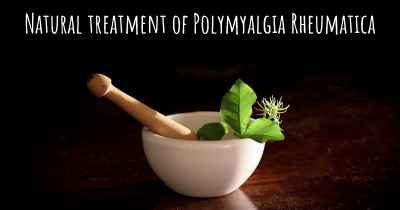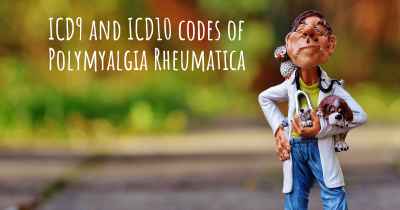What is the life expectancy of someone with Polymyalgia Rheumatica?
Life expectancy of people with Polymyalgia Rheumatica and recent progresses and researches in Polymyalgia Rheumatica

Polymyalgia Rheumatica (PMR) is a chronic inflammatory disorder that primarily affects older adults. While it can cause significant discomfort and pain, it does not typically affect life expectancy. PMR is usually treated with low-dose corticosteroids, which effectively manage symptoms and prevent complications. With proper treatment, most individuals with PMR experience significant improvement in their symptoms and quality of life. However, it is important to note that PMR is often associated with another condition called giant cell arteritis (GCA), which can lead to serious complications if left untreated. Therefore, early diagnosis and appropriate management are crucial to ensure the best possible outcomes for individuals with PMR.
Polymyalgia Rheumatica (PMR) is a chronic inflammatory disorder that primarily affects older individuals, typically those over the age of 50. It is characterized by severe muscle pain and stiffness, primarily in the shoulders, neck, and hips. PMR can significantly impact a person's quality of life, but it is not a life-threatening condition in itself.
When discussing life expectancy in relation to PMR, it is important to note that the condition itself does not directly affect longevity. However, PMR is often associated with another condition called giant cell arteritis (GCA), which is a more serious condition that affects the blood vessels. GCA can cause inflammation in the arteries, particularly those in the head and neck, which can lead to complications if left untreated.
Early diagnosis and appropriate treatment are crucial in managing both PMR and GCA. With the right medical care, individuals with PMR can experience significant improvement in their symptoms and overall well-being. Treatment typically involves the use of low-dose corticosteroids, such as prednisone, which help reduce inflammation and alleviate pain. In most cases, symptoms of PMR can be effectively controlled with medication.
However, the long-term use of corticosteroids can lead to various side effects, including an increased risk of infections, osteoporosis, diabetes, and cardiovascular diseases. These potential complications highlight the importance of regular monitoring and close medical supervision for individuals with PMR.
It is worth noting that the prognosis for PMR is generally favorable. Many individuals experience a significant reduction in symptoms within weeks or months of starting treatment. With proper management, most people with PMR can lead active and fulfilling lives.
As for the life expectancy of someone with PMR, it is comparable to that of the general population of the same age group. PMR itself does not directly impact life expectancy, but the presence of GCA or other underlying health conditions can influence overall longevity. It is essential for individuals with PMR to receive regular medical check-ups and manage any associated conditions effectively.
Furthermore, maintaining a healthy lifestyle, including regular exercise, a balanced diet, and avoiding smoking, can contribute to overall well-being and potentially improve life expectancy.
In conclusion, while PMR can significantly affect a person's quality of life, it is not a condition that directly impacts life expectancy. With early diagnosis, appropriate treatment, and proper management of associated conditions, individuals with PMR can expect to live a normal lifespan. Regular medical check-ups and a healthy lifestyle are essential for maintaining overall well-being.








